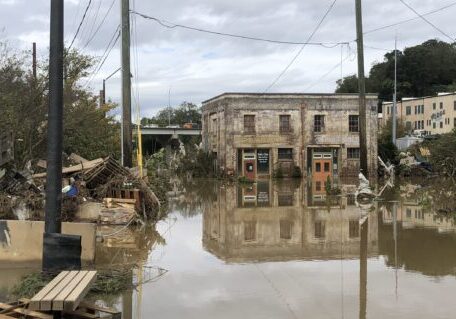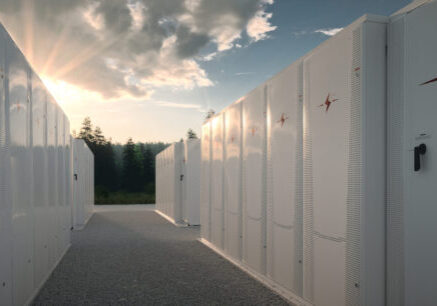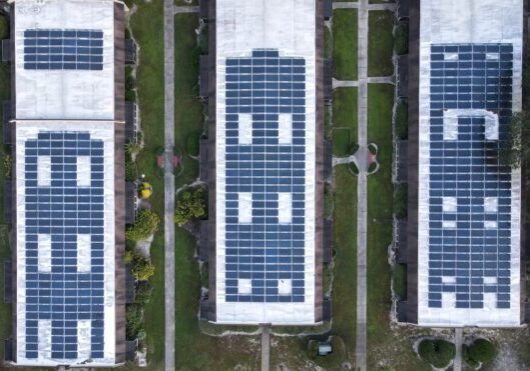March 22, 2018
California Utilities Propose Storage for Energy Resilience and Equity, But More Needs to be Done
By Seth Mullendore
Three of California’s largest utilities recently proposed more than 100 megawatts of utility-owned energy storage to support resiliency in critical public facilities and $6 million in incentives for customer-owned storage at multifamily affordable housing properties. If approved by the California Public Utilities Commission, the proposals would represent a great success for resilient power and improved energy equity in California.
However, with only a fraction of the proposed investments aimed at bringing the direct economic benefits of storage to low-income communities – over 140 megawatts in utility-owned projects versus around 6 megawatts for affordable housing – they also highlight the disparities inherent in many clean energy technology programs.
The proposals came about due to California Assembly Bill 2868, which was enacted in 2016. AB 2868 requires the state’s three investor-owned utilities, Pacific Gas & Electric (PG&E), San Diego Gas & Electric’s (SDG&E) and Southern California Edison (SCE), to propose program investments for up to 166 megawatts of distributed energy storage each, for a total of 500 megawatts. These investments are in addition to the state’s original energy storage utility mandate of 1,325 megawatts. The bill directs the utilities to prioritize programs and investments that serve the public sector and low-income customers, with the goals of reduced emissions and delivering customer benefits.
Advancing Community Resiliency
SDG&E’s proposal calls for adding up to 166 megawatts of energy storage to power critical public services during outages. The majority of this amount, about 100 megawatts, has already been assigned to seven proposed projects. Each of these energy storage projects would support multiple critical community facilities, including several fire stations and public libraries, along with a police station, a water pumping station, and the Polinsky Children’s Center, which is San Diego County’s emergency shelter for children who cannot remain at home due to abuse or neglect. During a grid outage, the storage systems, which will be sited at existing SDG&E substations, will allow the facilities to continue running critical loads as local microgrids powered by on-site renewables and stored energy.
These projects are an excellent example of how utility deployment of energy storage can and should be directed to deliver social benefits. The projects are also designed to deliver economic benefits: when the storage systems are not being called on to provide resilient power, they will be bid into the California Independent System Operator market to generate market revenues and serve as resource adequacy capacity to SDG&E. These economic benefits go to the utility, with the idea that they will eventually flow back to all ratepayers.
In selecting the projects, SDG&E prioritized several factors including local air quality standards, based on the state’s environmental justice screening tool, and community income levels. Despite these priorities, only three of the seven projects, representing 40 MW of storage are directly located in low-income communities, five of the projects are located in disadvantaged communities (DACs), a designation that takes into account environmental and social factors. And while community resilience is a valuable benefit, none of the economic benefits will directly go to the communities where they’re being developed. SDG&E expects to spend more than $280 million on the projects.
SCE and PG&E also propose utility-owned energy storage projects that could provide resiliency in their AB 2868 plans. SCE has proposed 40 megawatts of storage at distribution substations, with a priority for locations serving high levels of customers on California’s rate assistance program, California Alternate Rates for Energy (CARE), and those located in DACs. The projects are not designed to serve specific facilities, but SCE notes the possibility that the systems “could also provide emergency and backup power for local emergency resiliency and/or intermittent outages depending on the size of the system installed and local distribution needs at the time.”
PG&E has proposed energy storage developments on the distribution system that would support improved resiliency at military installations, correctional facilities, and public transportation stations. The projects haven’t been defined yet, but they would range in size from 1 megawatt to 20 megawatts. PG&E has stated a preference for projects located within low-income communities.
Unlike some of the projects being pursued by SDG&E, the ultimate benefits to low-income communities for the projects proposed by SCE and PG&E are questionable. To achieve the goals of AB 2868, the utilities should be required to justify these projects on the basis of clear benefits to the communities in which they are being developed. This justification could take a number of forms, such as powering critical community services during outages, as in SDG&E’s proposal; implementing local workforce training and development programs; or allocating a portion of revenues generated by the systems to programs benefiting local residents.
Incentivizing Energy Equity
In the long run, the larger opportunity, and need for additional attention by low-income community and environmental justice advocates, may be the behind-the-meter storage incentive programs proposed by SDG&E and SCE. Unfortunately, this is also where the disparity in investment levels is most clear.
In their proposals, SDG&E and SCE both lay out plans for energy storage incentives targeted to support installations paired with new or existing solar at multifamily affordable housing properties. The programs are designed to work with properties participating in the state’s solar affordable housing programs, Multifamily Affordable Solar Housing (MASH) and the new Solar on Multifamily Affordable Housing (SOMAH). The proposed storage incentive programs provide rebates for property owners to purchase storage systems or lease them through a third-party arrangement. Unlike the utility-owned investments, the economic benefits of these systems would go directly to affordable housing tenants and owners through Virtual Net Metering (VNEM), which splits solar and storage savings among individual residential units and a property’s common areas.
This is all good news, but the relative size of the programs is less than what it should be. SDG&E’s Expanded CARE Pilot Program has a budget of $2 million and a 2-megawatt storage deployment goal, representing less than 1 percent of the utility’s total proposed budget. SDG&E has identified nearly 700 properties that could qualify for the Expanded CARE Pilot Program. The proposed incentive aims to reach about 24 of them. SCE’s program is designed to incentivize up to 4 megawatts of energy storage at affordable housing – 10 percent of the proposed utility-owned investment in storage.
Like other California programs, utilities should be directed to devote a specified level of their AB 2868 storage investments to projects directly benefiting low-income communities and DACs. For instance, the state’s behind-the-meter energy storage incentive program, the Self-Generation Incentive Program (SGIP), established a 25 percent carve-out for customer-serving projects in DACs and low-income communities. AB 532 allocates 25 percent of Electric Program Investment Charge (EPIC) funds, which support renewable energy and research, development, and demonstration programs, for projects benefiting DACs and another 10 percent for projects benefiting low-income communities. At the very least, the utilities’ AB 2868 proposals should reflect the same proportion of investments to support projects benefiting these underserved communities.
While the proposed pilot programs appear to be no more than a small commitment by the utilities, they may have much bigger implications for the future of low-income storage programs.
As noted by SDG&E in its supporting testimony,
“Although SDG&E’s pilot program proposal is modest in terms of MW subscription (up to 2 MW), it intends to provide unique test cases and a model for expansion of this pilot at Expanded CARE sites that help seniors, homeless and other customers in need.”
If successful, the programs could be replicated by other California utilities and viewed as a model for utilities in other states.
The proposed incentive programs represent the success of efforts by Clean Energy Group and our partners in California to date, as well as the need for much more work going forward. The justification and design of the programs relied heavily on materials produced by Clean Energy Group.
From SDG&E’s testimony,
“As outlined in a report by Clean Energy Group, California Housing Partnership, and the Center for Sustainable Energy, additional incentives for storage are needed, and without them low-income customers will not be able to obtain energy storage and the benefits of resiliency, despite efforts to reserve funds for their use in programs such as the Self-Generation Incentive Program (‘SGIP’).”
The report cited, Closing the California Clean Energy Divide: Reducing Electric Bills in Affordable Multifamily Rental Housing with Solar+Storage, was also used to set the incentive level for the pilot program:
“SDG&E proposes a $1.20/Wh incentive, in addition to the Investment Tax Credit (“ITC”), to cover the full cost of energy storage for Expanded CARE facilities. The costs used to calculate the proposed incentive along with other key assumptions were obtained from the report Closing the California Clean Energy Divide: Reducing Electric Bills in Affordable Rental Housing with Solar + Storage.”
The original intent of this report was to justify inclusion of storage incentives within SOMAH, known only as AB 693 at the time. The concept of including storage incentives as part of the solar program was ultimately opposed by utilities and not included in the final implementation plan. Now, it appears that SDG&E and SCE have expanded their thinking on the issue. According to SDG&E’s calculations, their proposed incentive represents the full cost of installing and maintaining the system for 10 years. SCE is proposing somewhat lower incentives, starting at 75 cents per watt-hour.
Clearly, these programs are just a start. Along with expanding their scope, funding, and adoption by other utilities, work still needs to be done to ensure that the original pilots are a success.
To begin with, the following issues need to be addressed:
- Both SDG&E and SCE’s programs focus on shifting solar energy consumption to periods of higher electricity pricing under time-of-use (TOU) rate tariffs. (For more on how changes to California’s TOU rates can erode the value of solar, see Clean Energy Group’s report Solar Risk: How Energy Storage Can Preserve Solar Savings in California Affordable Housing.) This can deliver savings to both owners and residents, which is great, but misses the larger potential economic benefit for many properties – demand charge savings. While technically possible, reducing demand charges with storage is not allowed under existing VNEM regulations.
- SCE’s proposed incentive, while higher than incentives available through SGIP, may not be high enough for owners to realize economic benefits without being able to tap into demand charge savings. With no clear economic incentive to invest in storage, affordable housing owners may not opt to participate in the program.
- The programs don’t include any upfront funding to support independent technical assistance to help affordable housing owners figure out the economics and proper sizing of storage systems. Supporting owners with funding for objective, preliminary project assessments will be key to ensure full participation and the ultimate success of these programs.
As promising as these proposed affordable housing storage incentive programs may be, the utilities could certainly be doing more, and they will need to be pushed to do so. It took the advocacy community to get AB 2868 enacted, and it took independent analysis to convince the utilities that storage could work for low-income communities. It will take much more of the same to close the gap between utility-benefiting investments and low-income community-benefiting investments.
If done right, these modest initial programs could prove to be models for closing the clean energy divide in California and beyond.
This blog post was also published in The Energy Collective.














